Invisalign® — Wayland, MA
A Braces-Free Solution for a Crooked Smile
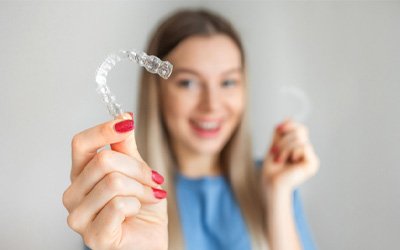 In the past, straightening your teeth meant filling your mouth with sharp metal brackets and wires. For three years – or longer – you’d have to wear metal braces, attending tightening appointments every few weeks. It’s easy to see why most adults decline orthodontic treatment. Today, we have an alternative to traditional metal braces. With Invisalign in Wayland, you can bypass this traditional technique and head toward a straighter smile with lightning speed. Contact our Wayland, MA team today to schedule an Invisalign consultation.
In the past, straightening your teeth meant filling your mouth with sharp metal brackets and wires. For three years – or longer – you’d have to wear metal braces, attending tightening appointments every few weeks. It’s easy to see why most adults decline orthodontic treatment. Today, we have an alternative to traditional metal braces. With Invisalign in Wayland, you can bypass this traditional technique and head toward a straighter smile with lightning speed. Contact our Wayland, MA team today to schedule an Invisalign consultation.
Why Choose Wayland Dental for Invisalign?
- Fully Personalized Clear Aligners
- Knowledgeable, Friendly Dentist
- Office That Utilizes the Latest Technology
How Invisalign Works
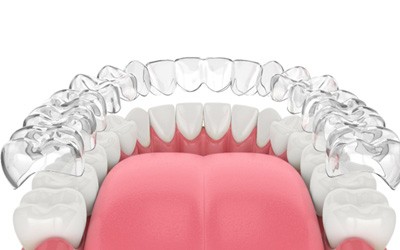
Invisalign involves a series of clear aligners that put pressure on your teeth to help them move to better positions. Unlike traditional metal braces, Invisalign aligners are made out of transparent materials, meaning they don’t stand out as much. On top of that, you can take your aligners out when it’s time to eat, allowing you to enjoy all kinds of foods during your treatment.
You will need to wear your current set of aligners for 20 to 22 hours every day. Throughout your treatment, you will switch to a new set of aligners every one to two weeks. We’ll monitor your progress carefully to confirm that everything is on track.
Who Can Invisalign Help?

Invisalign is generally reserved for mild to moderate orthodontic issues; more complex cases typically require braces. That being said, there are many different types of orthodontic corrections that Invisalign clear aligners can potentially help make. Our team will need to examine your mouth in order to get an accurate idea of your needs, but in the meantime, here’s a closer look at some of the issues that Invisalign can potentially help with.
Crowded Teeth
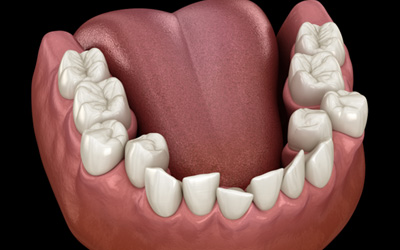
Your teeth can shift as you age, which can potentially cause them to become more crowded over time. This can ultimately result in a smile that is very hard to clean properly and puts you at a higher risk for gum disease, cavities, and other oral health issues. But with Invisalign, your teeth can be repositioned so that they lie flush next to each other, thus making it easier to practice proper oral hygiene while also improving your appearance.
Gaps Between Teeth
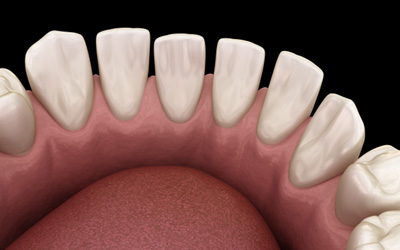
Gaps between your teeth can appear for a variety of reasons; sometimes it’s due to the way the bone has developed, but it can also be a result of teeth that are smaller than normal. You’ll want to have any gaps in your smile closed as soon as possible, as the empty spaces can easily trap food particles and harmful bacteria. Invisalign can sometimes be used to close smaller gaps.
Overbite
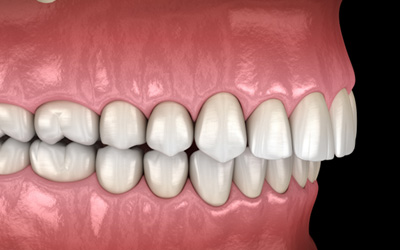
Having an overbite means your top teeth jut out in front of your lower teeth. A slight overbite is normal and nothing to worry about, but a more pronounced overbite can make it more difficult to speak properly, cause your teeth to wear down unevenly, and result in jaw pain. Depending on how severe your overbite is, Invisalign may be able to correct it.
Underbite
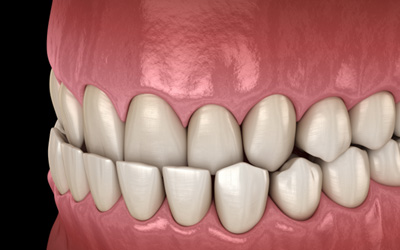
Childhood thumb sucking, oral trauma, or genetics can result in an underbite, meaning that the bottom teeth are slightly in front of the upper teeth. Not only can an underbite affect your ability to speak or chew, but it can also increase your risk for sleep apnea. If you choose Invisalign to correct an underbite, the aligners may need to be used in combination with certain attachments, such as rubber bands.
Crossbite
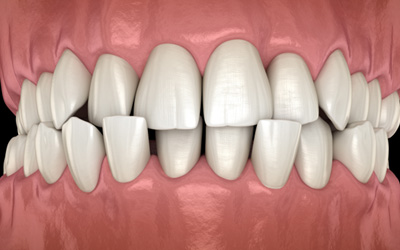
A crossbite occurs when some of your upper teeth sit inside the lower teeth whenever you close your mouth. If you choose to ignore a crossbite, it could lead to jaw pain, headaches, increased susceptibility to tooth decay, and other issues. It may be possible to correct a crossbite with Invisalign, but elastics and other accessories may be required depending on the underlying cause of the misalignment.
Open Bite
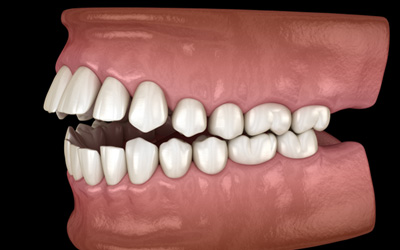
If the bone in your jaw doesn’t develop properly, the result could be an open bite where the top and bottom teeth don’t touch each other even when your mouth is completely closed. This can put an excessive amount of pressure on your back teeth, wearing them down at an accelerated rate. Invisalign can correct the positions of your teeth in order to improve the pattern of your bite.
Benefits of Invisalign
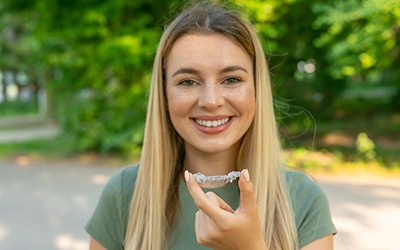
When it comes to straightening teeth, many patients find Invisalign to be an attractive alternative to braces. This, of course, is thanks to all the unique advantages that the treatment has to offer. If you’re still trying to decide whether Invisalign is right for you, here’s a brief summary of some of its most notable benefits.
Discreet Aligners
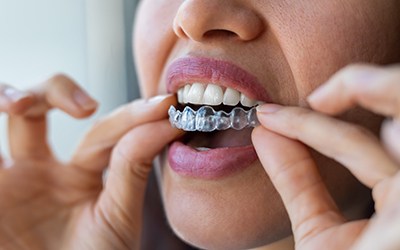
Are you unhappy with the idea of wearing visible metal brackets and wires on your teeth? Compared to traditional braces, Invisalign aligners are much less noticeable due to being made of see-through materials. People meeting you for the first time may not even realize that you’re wearing the aligners unless they see you take them out. As such, you will be able to show off your smile without reservation throughout your orthodontic treatment.
Improved Comfort
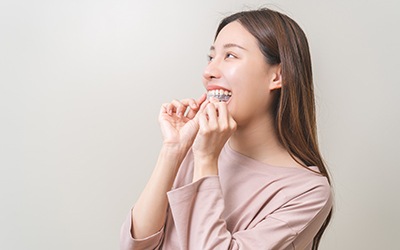
One of the downsides of traditional braces is that the metal brackets can often leave sores on the inside of your cheeks. In contrast, Invisalign aligners are made out of a smooth plastic that’s less likely to cause irritation. Each aligner is custom-made for your mouth, allowing for a more comfortable fit.
Freedom to Eat What You Want

People with braces need to avoid certain foods that could potentially damage their brackets and wires. Meanwhile, clear aligners can be taken out of the mouth during snacks and meals. As such, you’ll be free to enjoy all of your favorite foods without having to worry about disrupting your Invisalign treatment.
Better Dental Hygiene
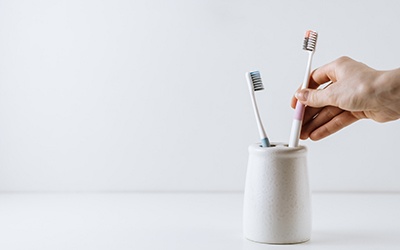
Practicing proper oral hygiene with traditional braces can be tricky. You need to be able to properly clean around the brackets and wires in order to remove as much plaque as possible. With Invisalign, there’s no need to make any major changes to your oral hygiene routine. Since the aligners are removable, you can simply brush the same way that you always have. The aligners themselves are also relatively easy to take care of.
Fewer Follow-Ups
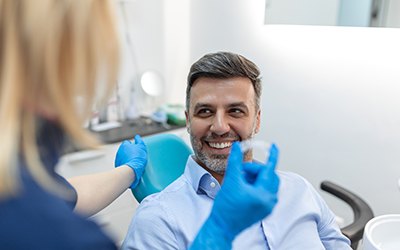
For any orthodontic treatment, it’s necessary to schedule multiple follow-up appointments so that your dentist or orthodontist can make sure that everything is going according to plan. Generally speaking, Invisalign tends to require fewer follow-up appointments than braces. You can normally expect to visit our office once every six to eight weeks.
Boosted Confidence

The discreet nature of Invisalign can go a long way toward helping you feel more confident about your appearance throughout your treatment. Furthermore, you’ll be able to get a good look at your teeth as they gradually move toward better positions. Seeing your smile improve over time can do wonders for your self-esteem. And of course, there’s the confidence that you’re likely to feel once you reach the end of the Invisalign process and get a good look at the beautiful final results!
How Much Does Invisalign Cost?
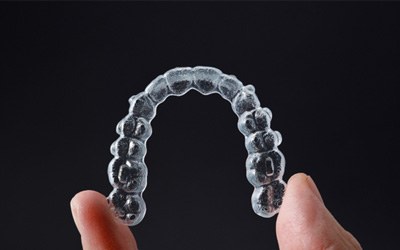
The length of your treatment and the total amount of aligners you need will determine how much you end up paying for Invisalign. We’ll keep you informed of the costs involved with the process, and we’ll do what we can to help you fit them into your budget, such as filing any necessary dental insurance claims on your behalf.
